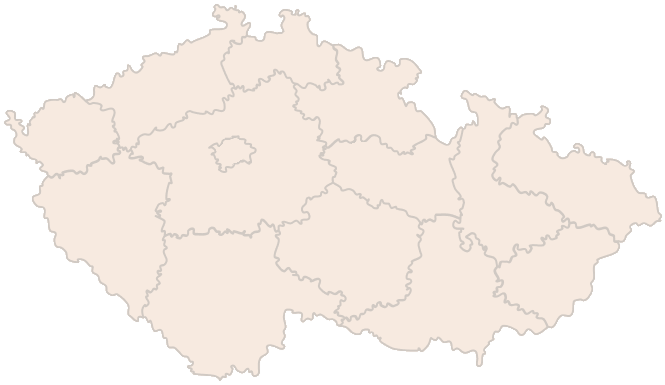What is VAT and who is affected
VAT is an indirect tax that is ultimately borne by the consumer but collected by the business – the taxpayer. The basic rate remains at 21% from 2013, while from 1 January 2024 we have only one reduced rate of 12% (previously two reduced rates of 10% and 15%). For goods and services listed in the annexes of the VAT Act, the reduced rate applies (e.g. tickets for cultural or sporting events), other supplies fall under the basic rate. According to the law, a taxable person (OPD) is anyone who carries out an economic activity independently. However, not every OPD is automatically subject to VAT.
The moment you start a business, you quickly get to the question, “Do I become a VAT payer or do I remain a non-taxpayer?” In order to give an informed answer, you need to understand not only the turnover thresholds, but also how being a VAT payer changes your pricing, administration and customer relationships.
Are you solving a similar problem?
Not sure how to do your taxes properly so you don't get it wrong?
We can help you navigate the law, whether it’s dealing with a specific tax situation, preparing for an audit by the tax authority or defending yourself in court.
I want to consult
- When you order, you know what you will get and how much it will cost.
- We handle everything online or in person at one of our 6 offices.
- We handle 8 out of 10 requests within 2 working days.
- We have specialists for every field of law.
Who is a VAT payer and non-tax payer and taxable person
The VAT Act defines anyone who carries out an economic activity independently as a taxable person (OPD). However, not every OPD is automatically a taxable person. You become a taxable person only after you have submitted a VAT registration and the tax office has entered you in the register. Until then, you act as a non-taxpayer – you invoice tax-free, but you pay tax on purchases from taxpayers and cannot deduct it.
VAT payer
You can become a VAT payer either by compulsory registration when you reach the limit or voluntarily at your own request:
Compulsory VAT registration
You must register for VAT if you reach a certain turnover. From 1 January 2025, turnover is calculated for the whole calendar year and two thresholds apply:
- cZK 2,000,000 – if you exceed this by 31 December, you will become a taxable person on 1 January of the following year.
- cZK 2,536,500 (equivalent to EUR 100,000) – exceeding this threshold triggers immediate payer status the following day.
In both cases, you must file a VAT return within 10 working days of reaching the limit. The time limit is short – watch your sales in real time as the invoiced amount at the time of delivery is counted, not when payment is received.
In addition to turnover, five other situations may force you to register (joining an association, buying a taxpayer company, merger, taking over the business of a deceased taxpayer, etc.).
Voluntary registration for VAT
If you have input VAT deductions (e.g. you purchase expensive machinery) or you invoice mainly to taxpayers, you can register voluntarily. You apply via the VAT form in the EPO and prove the link to the economic activity. Once your registration is approved, you get a VAT number and issue VAT receipts from the following day.
Specific category – identified person
There are also VAT entities that remain non-taxpayers domestically but become an identified person due to cross-border purchases or sales. The identified person is not entitled to deduct but files a tax return and a summary report.
Tip for article
How do corporate taxes work? How much is VAT for companies and how do they file their tax returns? Find out in our article.
Non-payer of VAT
If you sell mainly to end consumers (hairdressers, car service) and you do not have high VAT costs, it is often more advantageous to remain a VAT non-payer, as you save time and accounting costs. On the other hand, you are not allowed to add tax to the price, so your margin is 21% lower than if you were a VAT payer.
Practical example
Let’s imagine two graphic designers, Jan and Peter. Jana is a non-VAT payer, Peter is a self-employed VAT payer:
- Jana issues an invoice for CZK 10 000. He does not add anything.
- Peter sets a base of CZK 10 000 + 21% VAT, so he invoices CZK 12 100.
Impact on the taxpaying client
- The client-payer puts CZK 10 000 in Jana’s costs but misses the VAT.
- For Peter, he puts CZK 10,000 in costs and claims CZK 2,100 in input on his return – so the service costs him the same.
Impact on the non-paying client
- The non-paying client pays Jana CZK 10 000 and has nothing to deduct.
- Peter is CZK 2,100 more expensive for him, so he would have to knock off his base or risk losing the contract.
Cash flow of the entrepreneur
- Jana gets CZK 10 000 and keeps everything.
- Peter receives CZK 12 100 but pays CZK 2 100 to the state (unless he has a deduction). To have a balanced cash-flow, he must have comparable inputs or a financial reserve.
The difference in pricing explains why some sole traders voluntarily enter VAT registration while others remain non-payers until turnover forces them to register.
Obligations of a VAT payer
Once you become a VAT payer, you enter a regime that, while allowing you to claim VAT deductions and increasing your credibility, imposes the need to carry out several regular and fairly rigorous activities. From issuing your first invoice to checking the reliability of your suppliers, the following paragraphs cover all the essentials.
1. Issuing tax documents
Every taxpayer invoice, whether paper or electronic, must contain the basic identification details of both parties, the date of the taxable supply (DST), the tax base, the rate and amount of VAT, a description of the supply and the agreed price.
The VAT Act gives you 15 days from the DTAA to issue a proper tax document. In the case of so-called advance payments, you first issue a tax document for the payment received and, after the goods or services have been delivered, a final invoice accounting for the advance. If you issue a document in a foreign currency, you are obliged to indicate the conversion into CZK at the CNB exchange rate valid on the date of the VAT invoice.
You must correct the erroneous document with a corrective tax document (credit note or debit note), which must be registered and reflected in the next VAT return within the same time limit.
2. Recording and archiving
Every VAT payer and non-taxpayer is a “taxable person”, but VAT entities (taxpayers) must keep records for tax purposes – books of receipts and issues, often integrated directly into accounting software. These records must be kept for at least 10 years from the end of the tax year so that, in the event of an audit, it will be possible to trace back to each VAT return.
We recommend secure cloud storage with backup or a professional DMS system; simply “taking a picture of receipts on your mobile phone” is no longer accepted by the tax office as a reliable archiving method.
3. VAT returns, control statements and choice of tax period
VAT returns and control statements (KH) are submitted exclusively electronically, no later than on the 25th day after the end of the tax period. The standard is monthly, but if your turnover for the previous calendar year did not exceed CZK 15 million and you are not listed as an “unreliable taxpayer”, you can apply for the quarterly regime from the second year after registration.
The interactive VAT return form can be found in the EPO – Electronic Filing application on the MY Taxes portal. The system also offers an XML structure for automatic submission from the accounting software.
The fixed penalty for late filing of the KH is CZK 1,000, but for not filing even in the notice there is a penalty of up to CZK 50,000 and for serious hindrance of tax administration even up to CZK 500,000. So keep an eye on the calendar for deadlines or use the automatic alerts in the software.
4. Summary reporting: overview of trade in the EU
If you supply goods or selected services to another EU Member State to a VAT payer, a summary report (called VIES) is added. It is submitted within 25 days after the end of the calendar month in which you carried out the supply – even if you are a quarterly payer. For each transaction you enter the country code, the customer’s VAT number and the value in EUR. The summary report is not submitted if you did not supply goods or services to EU Member States during the month.
5. Supplier due diligence and the liability institution
The VAT Act has introduced the institution of the “unreliable payer” and now also the “unreliable person”. Anyone who seriously breaches tax obligations will be placed on a public list of the Tax Administration and customers will be liable for their unpaid VAT.
Therefore, before making any large payment, it is better to check the partner in the ARES register or directly on the website of the Tax Administration – you enter the VAT number and the system immediately lists the status. If you find uncooperative entities, you can pay the tax directly to the tax authority.
Summary
VAT is an indirect tax, which is actually paid by the consumer but collected by the business – the VAT payer. The basic rate is 21%, the reduced rate is uniformly 12%. You become a taxpayer either compulsorily when you exceed an annual turnover of CZK 2,000,000 (taxable from 1 January of the following year) or CZK 2,536,500 / EUR 100,000 (taxable the next day), or voluntarily when you get a tax deduction. In addition to the traditional taxpayers, there is a category of identified persons who remain non-taxpayers in the home country but, due to cross-border transactions, pay VAT on purchases or sales within the EU.
The VAT payer must issue tax documents with the required particulars, keep detailed records and archive them for 10 years, submit monthly (or quarterly) returns and control reports (or a summary report in the case of intra-EU trade). At the same time, it bears the risk of liability when working with “unreliable” suppliers, so it has to verify them in the register. A non-taxpayer avoids these administrative obligations but cannot claim a VAT deduction and must keep the margin at the tax-free price when selling to end consumers.




